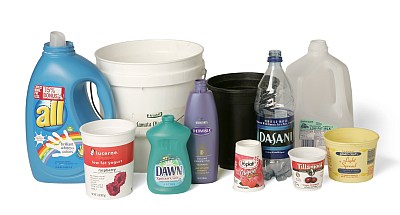How to Lose 5 Pounds Fast
Losing 5 lbs (2.2 kg) will require you to make changes in both your diet and exercise. To make sure that you lose 5 pounds in a safe and healthy manner, aim to lose weight slowly over a few weeks. Many studies show that losing weight over an extended period of time is safer, healthier and more sustainable long-term. Realistically, you can lose 5 pounds in about two to three weeks.[1] Start with the right diet, exercise and lifestyle changes and you'll be able to reach your goal within an appropriate amount of time.
Steps
Part 1 Changing Your Diet
-
1
Cut down on calories. In order to lose weight, you'll need to cut down on some extra calories in your diet. Lower-calorie diets can help you lose 5 pounds in an appropriate amount of time.
- Cutting out about 500 calories a day will help you lose about 1–2 pounds per week. You may also choose to cut out 750 calories daily to help you lose weight slightly faster.[2]
- Although cutting calories helps induce weight loss, eating too few calories or eating under 1200 calories daily is not safe or considered healthy weight loss. You'll be at increased risk for nutrient deficiencies, fatigue, loss of lean muscle mass and slow weight loss long-term.[3]
- Use a food journal or food journal app to calculate how many calories you typically consume. Subtract 500–750 calories from this number to get a new upper limit that might help you lose weight.
- If you subtract 500 calories and you get a value less than 1,200, use 1,200 calories as your limit. You can burn additional calories through exercise.
-
2
Eat a protein and fiber-filled breakfast every day. Protein and fiber help to boost metabolism and keep you feeling satisfied longer.
- Studies have shown that higher protein diets (and higher protein meals) can help you stay satisfied, reduce your appetite and help fuel weight loss.[4] Start your day with a higher protein breakfast to help keep grazing and snacking to a minimum.
- Like protein, fiber also helps you feel more satisfied longer. In addition, it helps to provide bulk to your meals so you may be able to feel satisfied with less foods.[5]
- Examples of higher protein, high fiber breakfasts include: 2 egg omelet with low-fat cheese and sauteed vegetables or 1 cup fat-free Greek yogurt with 1/2 cup (28g) of raspberries.
-
3
Include a serving of protein at each meal. In addition to filling up on protein at breakfast, include a serving of lean protein at each meal.
- Protein is a great nutrient for weight loss. When eaten regularly throughout the day, it can help decrease appetite, fuel your metabolism and manage your overall energy levels.[6]
- One serving of protein is about 3–4 oz (21-28g). This is also about the size of a deck of cards.[7] Including a serving at each meal and snack can help you meet your minimum daily needs.
- Lean protein foods are not only high in protein, but also low in calories which can help support weight loss. Try: seafood, poultry, eggs, low-fat dairy, lean beef or legumes.
-
4
Fill up on fruits and vegetables. To help keep you feeling satisfied and add volume to your meals, fill up on five to nine servings of fruits and vegetables each day.
- Both fruits and vegetables are lower in calories, but high in a variety of essential nutrients. They can add a significant amount of bulk and volume to your meals to help you feel more satisfied with fewer calories.[8][9]
- Try to eat one serving of fruit plus one or two servings of vegetables at each meal. This will help you meet the recommended five to nine servings daily.
- Also track your portions. Aim for 1 cup of vegetables, 2 cups of leafy greens or 1/2 cup of fruit (or one small piece).[10][11]
-
5
Include whole grains. 100% whole grains are a nutritious addition to your diet. They provide fiber, vitamins and minerals to your diet.[12]
- Although whole grains are healthy, moderating how much you eat during the day and over the course of the week can help you lose weight. Studies have shown that those people who eat fewer carbohydrates (especially from carb rich foods like pasta, white rice, bread and baked goods) can lose more weight faster.
- Include only one to two servings of grains daily. This can allow you to enjoy these nutritious foods but also still lose weight.
- Measure out appropriate servings of these foods. Aim for 1 oz or 1/2 cup of whole grains per serving.[13] Try oatmeal or quinoa.
-
6
Replace your liquid calories with water. Liquid calories can pack on weight quickly. Studies have shown that sweetened beverages add a significant amount of excess calories to your diet and can lead to weight gain long-term.[14]
- Cutting out lattes, smoothies, sugary coffee drinks, sports drinks, soda and alcoholic beverages will significantly reduce your calorie intake. Many health professionals consider these types of beverages as "empty calories," that give no nutritional benefit.[15]
- Increase your water or clear fluid (like flavored water or decaf unsweetened tea) intake to replace calorie-containing liquids.
- Aim for about eight to 13 8-oz glasses (2–2.5 litres) of these types of no calorie beverages each day to help you maintain proper hydration.[16]
-
7
Limit processed foods, sugar and refined carbohydrates from your diet. These low-nutrient foods can make you pack on extra pounds or prevent you from losing weight. Limiting these foods can help you lose 5 pounds more quickly.[17]
- Limit or cut out highly processed foods like: frozen TV dinners, canned soups, processed meats, canned pastas, chips, crackers and pretzels.
- Also limit or cut out processed sweets and sugars like those found in ice cream, candy, cookies, pastries and sweetened beverages. Instead, grab a piece of fruit to satisfy your sweet tooth.
Part 2 Changing Lifestyle Habits
-
1
Do 30 minutes of interval-based cardiovascular activity every day. This should include a warm up and cool down, then periods of medium intensity interspersed with periods of high-intensity, such as sprints.
- There are more weight-loss and metabolism-boosting benefits with interval training than working out at the same intensity for 45 minutes. You have increased fat burn and increased metabolism long after the workout has been completed.[18]
- If you can oversee your own intervals, then use a treadmill, gym cycle, stair stepper, elliptical, rowing machine or go swimming. Do one to two minutes sprinting and spend two to four minutes recovering. Try downloading an app that will alert you when to switch from high- to low-intensity.
- If you are unsure how to begin interval training, sign up for a cardiovascular gym class. Good choices for losing weight quickly are boot camp, cardio burn, and spinning.
-
2
Weight train every other day. Make sure you do at least 30 minutes of weight training at one time to boost your metabolism and gain lean muscle.[19] Seek out professional advice from an exercise specialist, personal trainer, kinesiologist, or physiotherapist before engaging in a serious weight training regime.
- Do 30 minutes of squats, lunges, push ups, pull ups, planks, or other body weight exercises. You can choose to do this at home, at the gym on machines or as part of a class that uses hand weights and body weight exercises.
- Research alternative methods through personal training videos online or sign up for several sessions with a personal trainer to start losing weight.
- Always include a day off in between weight lifting. This allows your muscles to rest and recovery from being worked with weights.
-
3
Add a 30 minute walk into your day. You can burn 100-200 or more extra calories with a walk on your lunch break, after work, after dinner or right when you wake up. This can aid in supporting quicker weight loss.[20]
- Buy a pedometer and ensure you are taking at least 10,000 steps per day. Doctors recommend an activity level of 10,000 to 12,000 steps to remain healthy. An increase in steps may also help you shed a few extra lbs (or kilos).
- If you don't have time for a 30 minute walk, trying walking three times a day for 10 minutes a session.
-
4
Increase your sleep. If you aren't getting seven to nine hours of sleep a night, then your sleep habits may actually be working against your goal to lose weight.
- Increasing sleep may help balance hormones, boost metabolism and increase weight loss.[21]
- In addition, adequate sleep helps to regulate your appetite. When you're sleep deprived you might feel more hungry and be more susceptible to making poor choices.
- Aim for at least seven to nine hours of sleep nightly.[22] Go to bed earlier or wake up later if you can.
-
Things You Should Do To Lose Weight
If you are serious about loss, I mean, healthy and permanent l
-
How To Help Your Weight Loss In Seconds
Weight loss in seconds is possible and it starts in your mind. With
-
What’s Your Ideal Weight?var zeus = zeus
There’s your age. Your birthday. Your phone number. Your social
-
Find Out Your Ideal Weight According To Your Body Shape, Height And Age
What is my ideal weight? This is a question a lot of people ask them
-
How to Host a Weight Loss Contest
Weight loss can be a challenging journey, especially when youre takin
-
Hit Your Weight Loss Goals By Following These Tips
Looking to shed some of that body fat then consider that hiking, cycl
- DON'T MISS
- Having Issues With Your Weight? Try This Plan!
- Diet Changes to Help You Get Rid of Fat Fast
- Potassium and Weight Loss
- Weight loss tip #148 – Watch motivational fitness videos
- Great Tips For Effective, Yet Simple, Weight Loss.
- 5 New Ways To Kill A Cravingvar zeus = zeus
- How to Gain Weight Fast (for Men)
- Losing Belly fat - Is losing belly fat possible?
- Nutrition Tips For Weight Loss - 7 Basic Nutrition Tips For Successful Weight Loss
- Can Water Make You Lose Weight?




